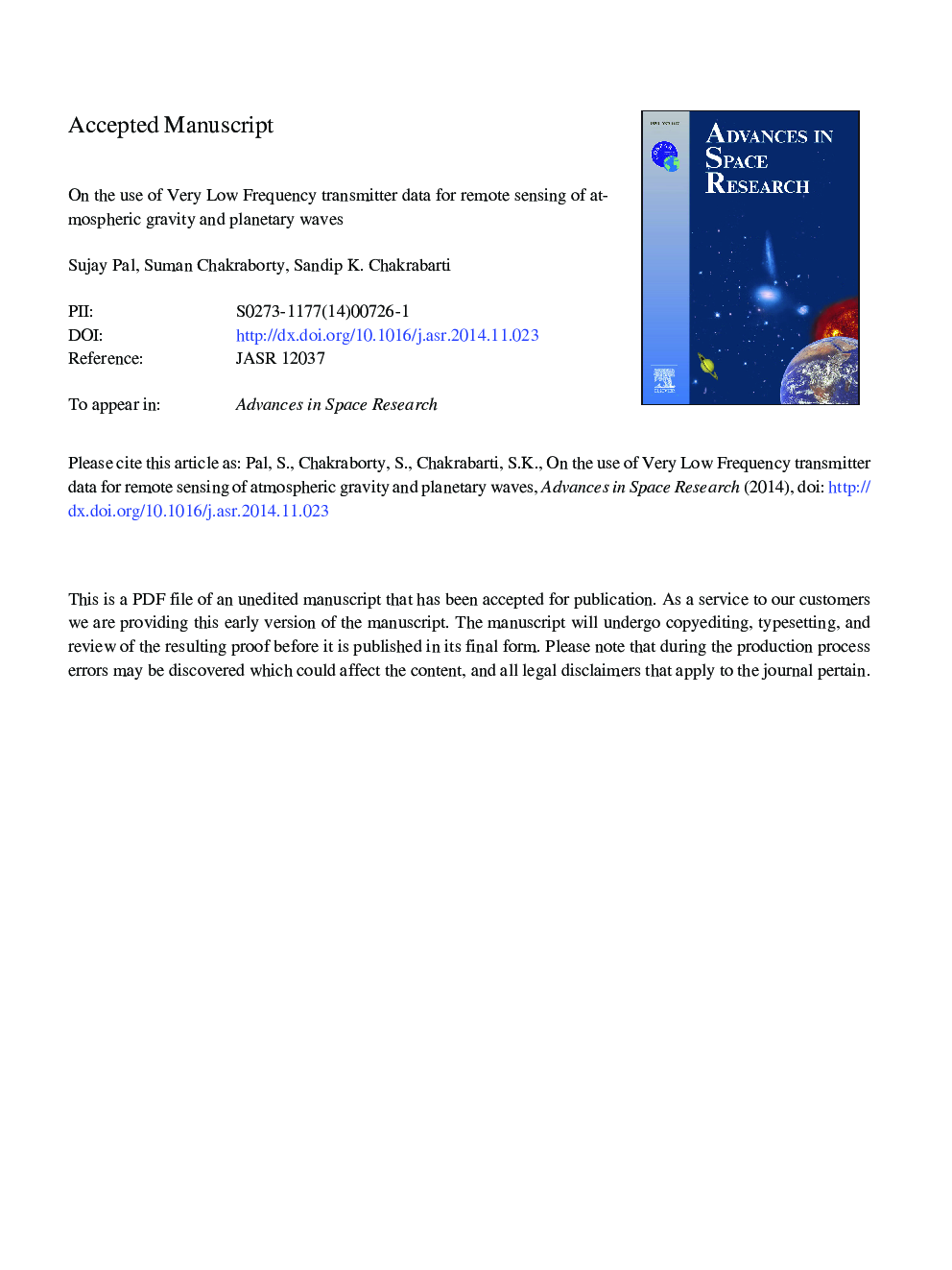| Article ID | Journal | Published Year | Pages | File Type |
|---|---|---|---|---|
| 10694243 | Advances in Space Research | 2015 | 20 Pages |
Abstract
Continuous ground-based monitoring of Very Low Frequency (VLF) transmitter signals is an efficient remote sensing tool for studying of the lower ionosphere (60-90Â km). Here, we present the use of VLF radio data to study short-period (â¼min-hrs) atmospheric gravity waves and long-period (â¼days) planetary waves. We analyse VLF data from several receiving stations obtained by ICSP-VLF network during the total solar eclipse of July, 2009 to show the existence of short-period atmospheric gravity waves. We find dominant wave periods range from 10Â min to 1Â h around the time of maximum eclipse phase which could be associated with atmospheric gravity waves excited due to the eclipse. We also analyse VLF amplitude data of 2007 received at ICSP, Kolkata from VTX (18.2Â kHz) transmitter for planetary wave-type oscillations in the mesosphere-lower ionosphere system. Fourier and wavelet analysis show presence of periodic structures with periodicity in the range of 5-27Â days. We compare VLF planetary spectrum with spectrum obtained from total column density of Ozone and mesospheric average temperature data which may indicate vertical coupling between the stratosphere and ionosphere in winter to early spring time.
Related Topics
Physical Sciences and Engineering
Earth and Planetary Sciences
Space and Planetary Science
Authors
Sujay Pal, Suman Chakraborty, Sandip K. Chakrabarti,
